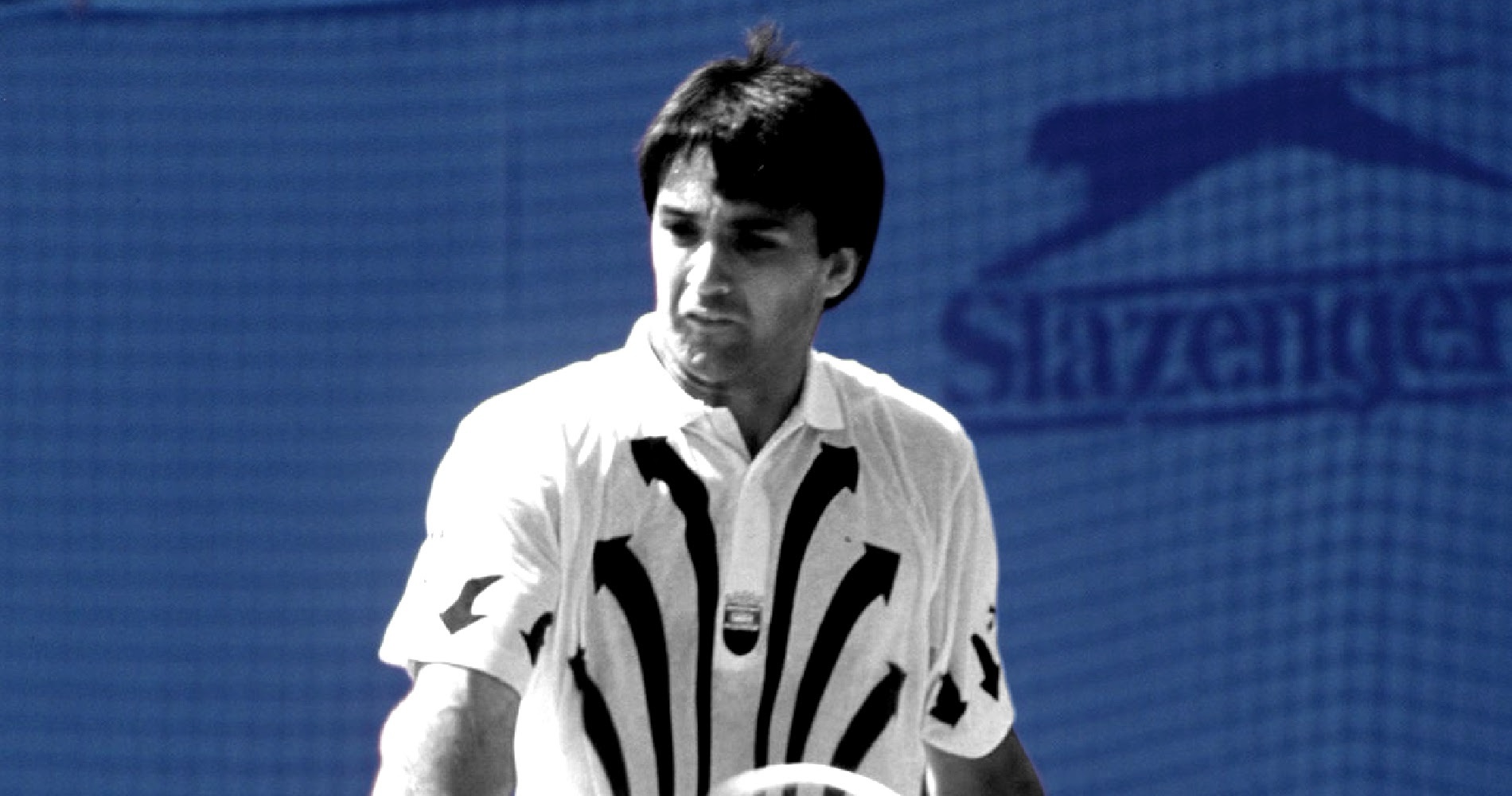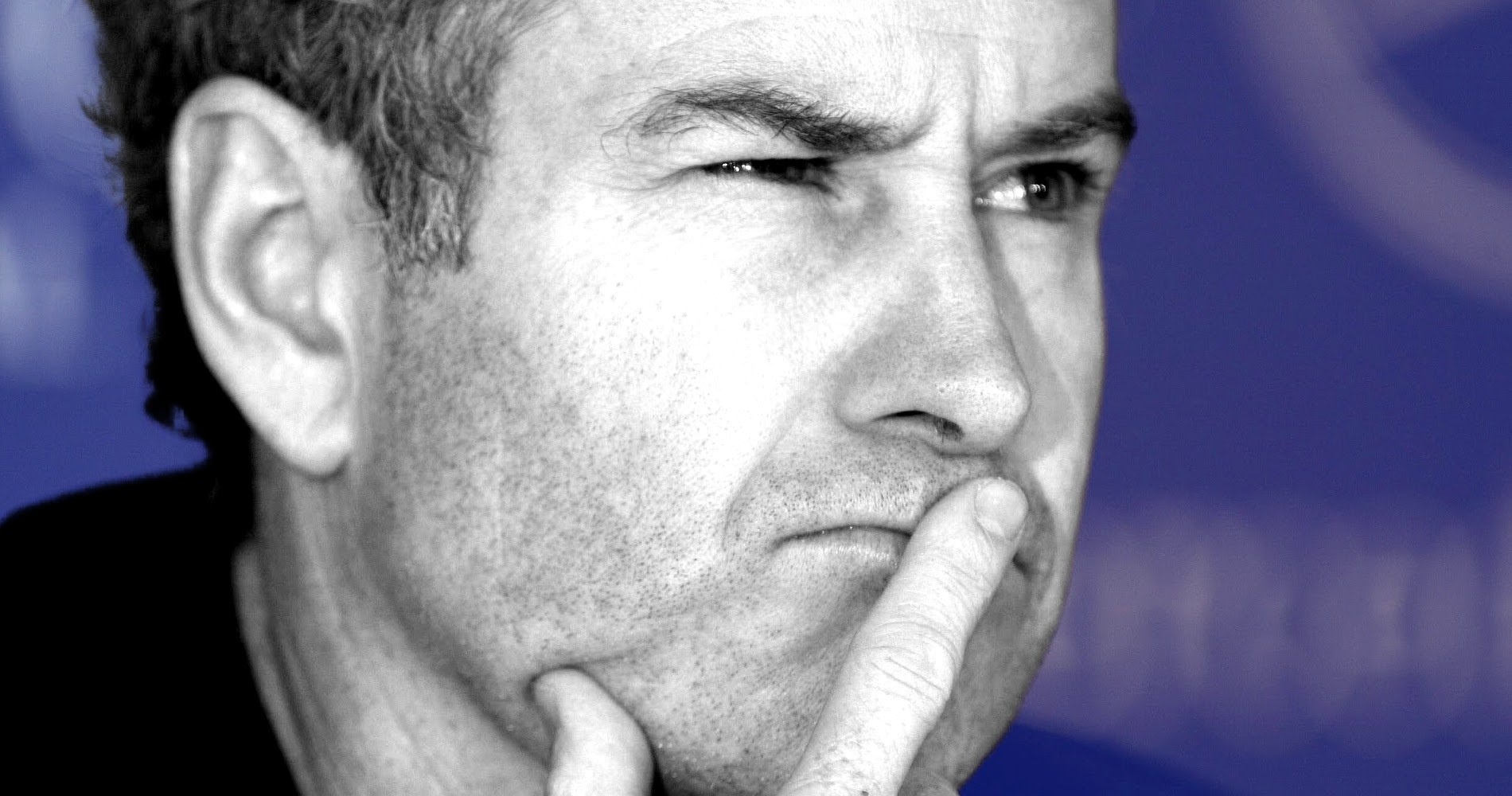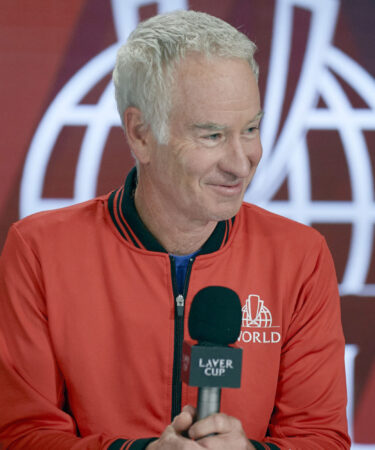December 12, 1981: The day John McEnroe almost had a fight with his own Davis Cup captain
Every day Tennis Majors takes you back in time to celebrate a great moment in tennis history. Today, we go back to 1981 to witness how, during the doubles of the Davis Cup final, John McEnroe repeatedly lost his temper to the point where he even exchanged heated words with his captain, Arthur Ashe
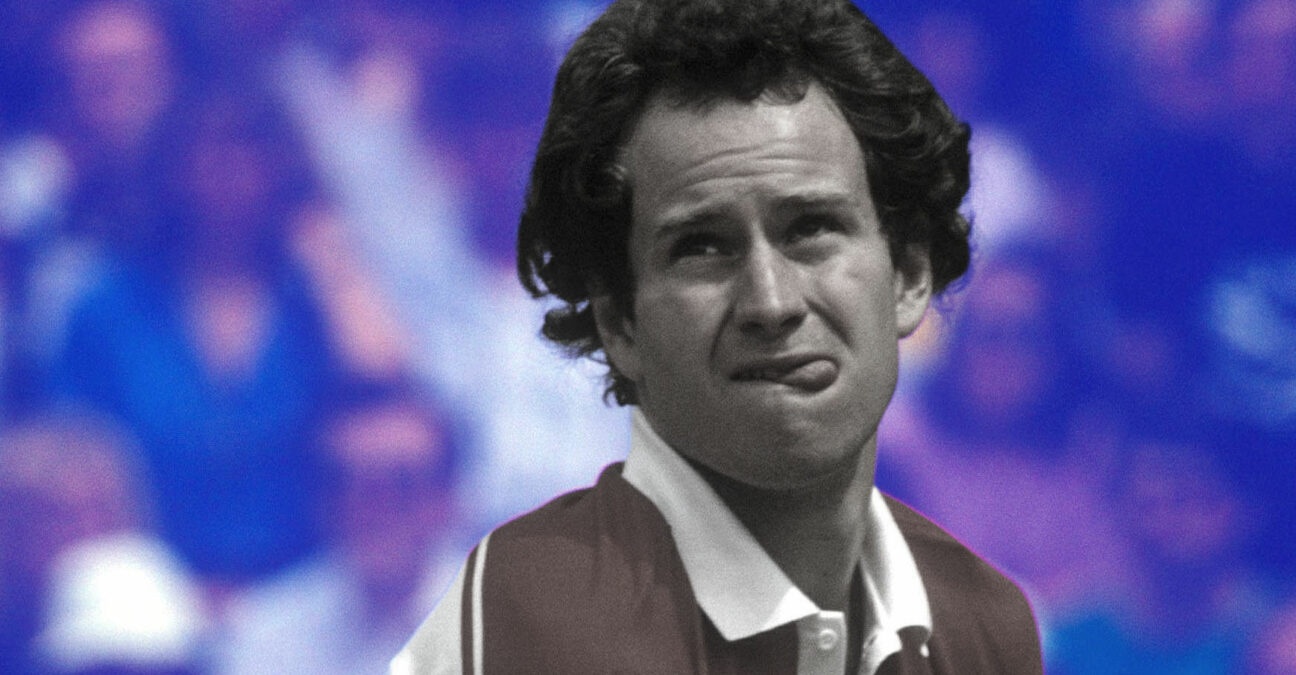
What happened exactly
On this day, December 12, 1981, John McEnroe, the new world No 1, partnering Peter Fleming, was facing Guillermo Vilas and José-Luis Clerc, from Argentina, in the Davis Cup final. Although they were the heavy favourites, the Americans were caught up in a very tense five-set match (which they would finally win), during which McEnroe yelled at almost everyone in the stadium, from his opponents to his own captain.
The players involved: USA and Argentina
- The USA team: John McEnroe and Peter Fleming
John McEnroe, born in 1959, was world No 1 since August 1981 after he claimed his first Wimbledon crown, defeating the Swede legend Bjorn Borg in the final (4-6, 7-6, 7-6, 6-4). The lefty from New York had amazed the tennis world since his first steps on the tour, in 1977, when at the age of 17, showing up at Wimbledon as an amateur, he made his way out of the qualifications unto the semi-finals. ‘Mac’ was very talented, his game being based on precision and touch on top of an iconic and lethal serve that he liked to follow at the net. In 1979, he became the youngest ever US Open champion, defeating Vitas Gerulaitis (7-5, 6-3, 6-3). He also made quite a sensation by edging Bjorn Borg (7-5, 4-6, 6-2, 7-6) to win the WTC Finals. In 1980, he played his most famous match in the Wimbledon final, where he lost in five sets against Borg, after winning an outstanding tie-break in the fourth set (18-16). In September, he managed to defend his title at the US Open, edging Borg in the final (7-6, 6-1, 6-7, 5-7, 6-4). In 1981, after his first triumph at the All England Club, McEnroe claimed the US Open crown for a third time, edging Bjorn Borg once again in what would later be remembered as the last appearance of the Swede in a Grand Slam tournament (4-6, 6-4, 6-2, 6-3).

Peter Fleming was born in 1951. Although he was a very good player in singles, having reached a best ranking of No 8 and claimed three titles (including the 1979 Cincinnati Open, where he defeated Roscoe Tanner in the final, 6-4, 6-2), he was mostly known as a great doubles player. With his iconic partner, John McEnroe, he had already won four Grand Slam tournaments (Wimbledon in 1979 and 1981, and the US Open in 1979 and 1981).
- Argentinia: Guillermo Vilas and Jose-Luis Clerc
Guillermo Vilas, from Argentina, was a clay-court legend, a left-hander who was one the first players to use massive top spin from both wings. In 1975, he reached the Roland-Garros final, losing to Bjorn Borg, the only player who could challenge him at the time in long baseline rallies (6-2, 6-3, 6-4). After being defeated in the US Open semi-finals twice, in 1975 and 1976, Vilas reached his peak form in 1977. That year, he dominated the sport, claiming 16 titles, triumphing at Roland-Garros (destroying Brian Gottfried in the final, 6-0, 6-3, 6-0) and in the US Open at Forest Hills, where he beat the local favourite Jimmy Connors (2-6, 6-3, 7-6, 6-0). On top of that, he reached the final at the Australian Open, on grass, where he was defeated by Roscoe Tanner in the final (6-3, 6-3, 6-3). He also set a new record, which would remain unbeaten for decades: a 53-match win streak on clay courts. Despite these great results, Vilas never officially reached world No 1, which would create various controversies over time about the ranking system. In 1978, the Argentinian finished runner-up to Borg at Roland-Garros a second time (heavily defeated, 6-1, 6-1, 6-3), but he managed to claim another Grand Slam title, defeating John Marks in the Australian Open final (6-4, 6-4, 3-6, 6-3). In 1979, despite a disappointing season, he added a last Grand Slam title to his list of achievements, defeating John Sadri in the Australian Open final (7-6, 6-3, 6-2). Since then, the Argentinian seemed to be declining, and in 1981, he didn’t even reach the quarter-finals of a Grand Slam tournament.
Jose-Luis Clerc, from Argentina, was born in 1958. A clay-court specialist, he claimed his first title on his favourite surface in 1978, in Florence (defeating Patrice Dominguez in the final, 6-4, 6-2, 6-1). In 1979, he reached the fourth round at both Wimbledon and the US Open, but it was in 1981 that he reached peak form. That year, he claimed six titles on the Tour, including the most important of his career, in Rome (defeating Victor Pecci in the final, 6-3, 6-4, 6-0), but he also reached the semi-finals at Roland-Garros (defeated by Ivan Lendl, 3-6, 6-4, 4-6, 7-6, 6-2). In December 1981, he was world No 5.
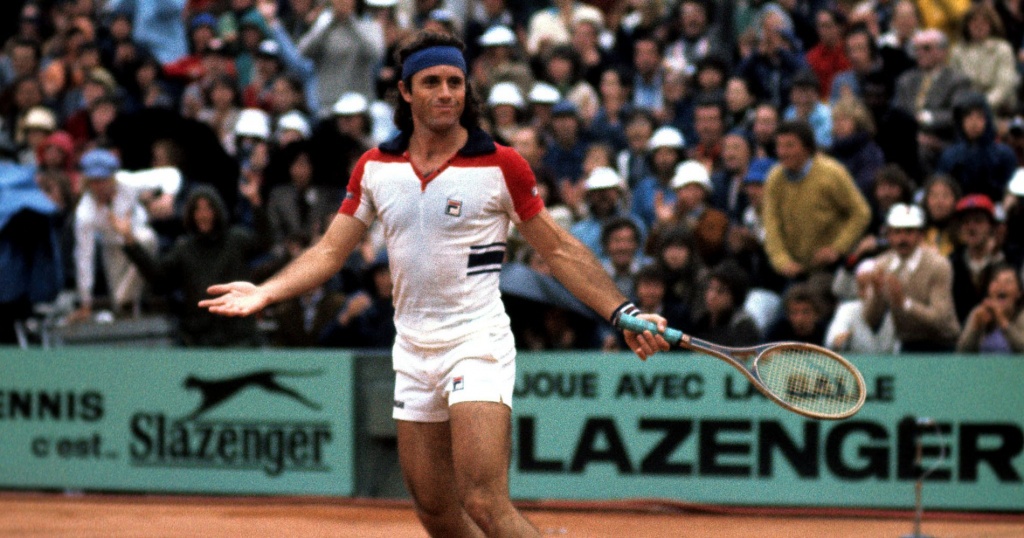
The place: Davis Cup final, Cincinnati, Ohio, USA
The 1981 Davis Cup final was held in Cincinnati, Ohio, at the Riverfront Coliseum, a multi-purpose arena which usually hosted concerts and hockey games. For the Davis Cup final, it had a capacity of 15,000 spectators.
The facts: mcenroe angry with everyone, including ashe
When the United States faced Argentina in the 1981 Davis Cup final, their No 1 player, John McEnroe, was considered the best player in the world at both singles and doubles. The young lefty, who became world No 1 in August, had won both singles and doubles events that year at Wimbledon and the US Open, which made him a very rare asset in a Davis Cup team. On top of that, the tie was held on indoor carpet, the least favourite surface of the Argentinians, who were mostly known for being great on red clay. However, in 1980, McEnroe had been through the most heartbreaking Davis Cup of his career against them, when he met defeat for the first time in this competition against José-Luis Clerc, before losing a second rubber against Guillermo Vilas.
On the first day of this 1981 final, McEnroe easily dismissed Vilas (6-3, 6-2, 6-2), but his teammate, the great server Roscoe Tanner, couldn’t break Clerc’s confidence.
On Saturday, December 12, when McEnroe and his old-time partner Peter Fleming faced Clerc and Vilas, they were the heavy favourites. Not many people thought the Argentinians stood a chance against the recent Wimbledon and US Open champions, but, pushed by the spirit of the Davis Cup, they pushed the Americans into an unexpectedly tight match. “Davis Cup produces an elevation of both intensity and caliber of play,” said Arthur Ashe, the American captain, quoted by upi.com.
Meanwhile, McEnroe repeatedly lost his temper, forcing his captain to walk on court twice to prevent the outbreak of a fight. His targets? His opponents, who took too much time between points; the crowd, who were too noisy; the officials, who kept making wrong calls; and a photographer who moved during play. “We’ll see who wins!” he yelled at a group of enthusiastic Argentine fans.
The world No 1 was particularly provocative – and his opponents tried to make him lose control. “Let me know when you’re ready, all right? We got all afternoon,” he yelled at Vilas, who was deliberately taking too much time.
All players then converged to the net for a heated exchange of words. Ashe jumped out from his chair to push McEnroe back to the baseline, and on the following changeover, the United States captain engaged his players into a “blistering conversation”, according to Sports Illustrated. However, a few seconds later, Clerc and McEnroe had words again, and “and the captain and McEnroe acted as if they were about to square off”.
In the end, the No 1 gathered himself together and the United States prevailed, 6-3, 4-6, 6-4, 4-6, 11-9. “All they’re worried about is messing you up,” said McEnroe, according to Sports Illustrated. “They’re not a doubles team. We’re a doubles team. They’re all gamesmanship. If people don’t think Davis Cup is different from a regular tournament, then they didn’t see what happened out there today.”
The Argentinians were not surprised by McEnroe’s attitude. “McEnroe gets upset at this and at that,” said Vilas, while Clerc simply said, “I think he’s a brat boy on the court.”
What next: mcenroe wins davis cup for USA
On the following day, McEnroe would clinch the title, defeating Clerc in another five-set thriller (7-5, 5-7, 6-3, 3-6, 6-3). “When you win the Davis Cup, a lot is forgotten,” the world No 1 would comment.
However, over the years, having to manage McEnroe’s personality and tantrums would be one of the major reasons that would push Ashe to resign from his position as the Davis Cup captain, in 1985.

